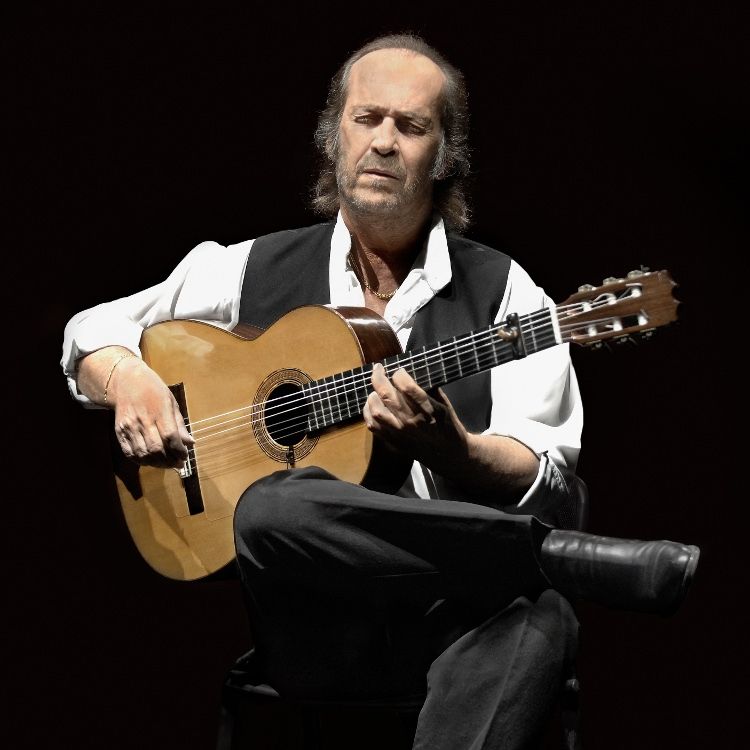Paco de Lucia was born Francisco Sanchez Gomez on 21 December 1947 and died 26 February 2014. He was a Spanish flamenco musician, composer, and producer. He was a leading advocate of New Flamenco and one of the first flamenco musicians to successfully cross over into jazz and classical music. Eric Clapton and Richard Chapman, the authors of Guitar: History, Players, refer to de Lucia in Guitar: Music, History, Players as a “titanic figure” in flamenco guitar history. Dennis Koster, the author of Guitar Atlas, Flamenco, also describes de Lucia among “his greatest guitarists”. De Lucia is remembered for his creativity and harmony, and his extraordinary dexterity, technique and strength in his right-hand, which allowed him to execute extremely fast and fluid picados. He is a master of contrast and often uses picados in combination with rasgueados or other techniques. He also often adds jazz-inspired scale tones and chords to his compositions. His innovations were instrumental in the development and evolution of New Flamenco, Latin jazz fusion and traditional Flamenco. De Lucia was praised for recording with Camaron de La Isla, a flamenco singer in the 1970s. They recorded 10 albums together. His most well-known recordings include “Rio Ancho”, later fused with Al Di Mela’s “Mediterranean Sundance”, “Entre dos aguas”, and “La Barrosa”, as well as “Cepa Andaluza”, “Impetu”, and “Gloria al Nino Ricardo”. In the late 1970s, his collaborations with Al Di Meola, Larry Coryell and John McLaughlin saw him rise in popularity beyond his homeland of Spain. De Lucia, along with his brothers Pepe de Lucia, guitarist Ramon de Algeciras and singer Pepe de Lucia, formed the Paco de Lucia Sextet. They collaborated with Chick Corea for their 1990 album Zyryab. He performed at Expo 92 in Seville in 1992 and again in Madrid a year later, on the Plaza Mayor. He began to reduce his public performances in 2004, and he retired from full-time touring. He gave many concerts per year, mostly in Spain and Germany, as well as at European festivals in the summer months. Wikipedia
